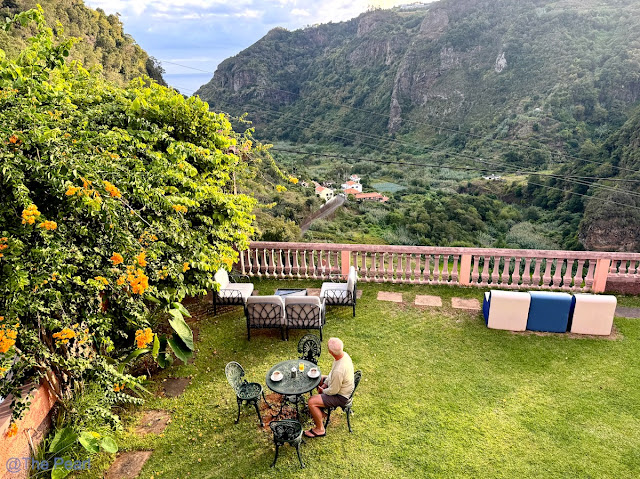Guam to Chile – Blog Post 9
September 22 – At Sea between Lautoka and Vulaga
September 23 – Vulaga, Lau Group, Fiji
Seabourn Pursuit arrived off the reef entrance to Vulaga Atoll about 0300 and maintained station until sunrise at 0600. The ship moved closer to the reef entrance, zodiacs and submersibles were launched and at 0700 the first trips ashore started, with the expedition team leader and three Fijian guides headed to the village for ceremonial kava and permission to enter the village and cruise the waters of the lagoon. At 0730, Patrick departed on a kayak excursion and at 0800 guests were starting ashore for a wet landing in the lagoon and a roughly one mile walk to the village where there were dances, tours, and opportunities to shop for native handicrafts. Julie participated in that excursion.
 |
| Reef entrance to Vulaga Lagoon |
 |
| Rock formation in the lagoon |
 |
| Coral formations at 100 feet deep |
 |
| The lagoon has dozens of the mushroom rocks |
Eagle Ray from Submersible
Meanwhile, Patrick was kayaking in the lagoon among the limestone/karst eroded pinnacles which looked like mushrooms in many cases. The lagoon is popular with cruising sailboats, there were five anchored in various places around the lagoon.
At the end of the 2-hour kayak expedition, Patrick was ferried back to the Seabourn Pursuit for another dive outside the reef on one of the submersibles This trip had many more fish visible than in previous excursions, and we were able to identify 21 separate species in the videos and photos The trip was notable for diving to 130 meters and for the relatively rough seas encountered when boarding and disembarking the submersible itself, along with the wet zodiac ride back to the ship.
Julie reported a good visit to the village, with dances, shopping and even a discussion on what life is like on an atoll with only a monthly supply ship carrying mail and staples.
In the afternoon there were two lectures, one on wildlife conservation, and the second on whale conservation.
Seabourn Pursuit departed Vulaga shortly after 1300 and headed for a technical stop in Tonga early on September 24 to drop off the tour guides and the Fijian government officials we carried from Lautoka.
September 24, 2024 – First Time
Lectures today included one on ancient ferns, one on phytoplankton, another on the evolution of the modern naturalist (from shotguns to smart phones), and finally one on the impacts of plastic pollutions in our oceans and current mitigation strategies for that plastic pollution.
Today we cross the International Date Line eastward, so we will set our clocks from GMT+12 to GMT-11, effectively gaining a day. That means we experience September 24 for a second time.
September 24, 2024 – Second Time, At Sea
Lectures today include one on Gaugin’s art and Tahiti, discussions on Longitude and the importance of accurate time measurement for mariners before the advent of GPS, etc, another lecture on the impact of the Challenger Expedition on underwater exploration, and finally, a lecture on the human story, from being hunter/gatherers to AI and what might be next.
September 25, 2024 – At Sea Enroute Papeete
As Seabourn Pursuit continued the voyage to Papeete we had more lectures to fill the day, as well as fun activities. The lectures included one on the geography of French Polynesia, one on Polynesian Sea Turtles and the first of two lectures on HMAV (Her Majesty’s Armed Vessel) Bounty, the mutiny, the relation between Fletcher Christian and Bligh and how one decision led to death and the other to life.
September 26, 2024 – At Sea Enroute Papeete
The final day at sea had the last set of lectures for this segment of the trip. The most interesting lecture was the second part of the Bligh/Christian story following the mutiny, where William Bligh ends up a Vice-Admiral in the Royal Navy, and Fletcher Christian ends up dead. In a few days we will be at Pitcairn Island, where some of the mutineers landed and finally perished. If the weather cooperates, we will get ashore.
September 27, 2024 – Arrive Papeete





















































